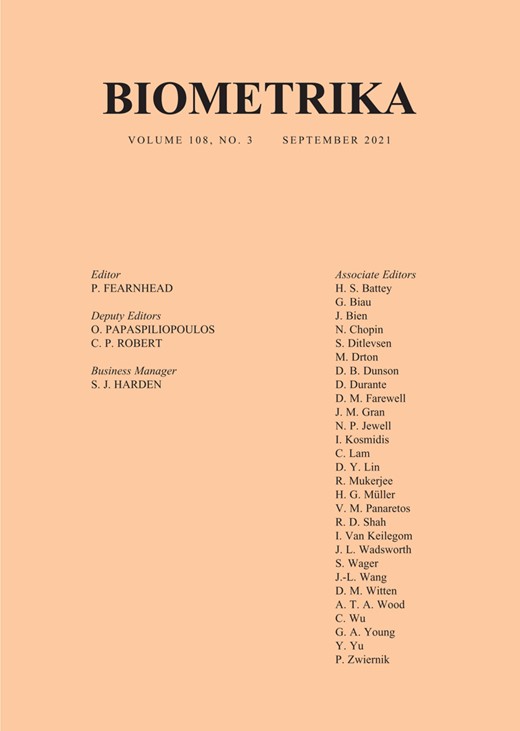-
Views
-
Cite
Cite
M Amico, I Van Keilegom, B Han, Assessing cure status prediction from survival data using receiver operating characteristic curves, Biometrika, Volume 108, Issue 3, September 2021, Pages 727–740, https://doi.org/10.1093/biomet/asaa080
Close - Share Icon Share
Summary
Survival analysis relies on the hypothesis that, if the follow-up is long enough, the event of interest will eventually be observed for all observations. This assumption, however, is often not realistic. The survival data then contain a cure fraction. A common approach to modelling and analysing this type of data consists in using cure models. Two types of information can therefore be obtained: the survival at a given time and the cure status, both possibly modelled as a function of the covariates. The cure status is often of interest to medical practitioners, and one is usually interested in predicting it based on markers. Receiver operating characteristic, Roc, curves are one way to evaluate the predicted performance; however, the classical Roc curve method is not appropriate since the cure status is partially unobserved due to the presence of censoring in survival data. We propose a Roc curve estimator that aims to evaluate the cured/noncured status classification performance from cure survival data. This estimator, which handles the presence of censoring, decomposes sensitivity and specificity by means of the definition of conditional probability, and estimates these two quantities by means of weighted empirical distribution functions. The mixture cure model is used to calculate the weights. Based on simulations, we demonstrate good performance of the proposed method, and compare it with the classical Roc curve nonparametric estimator that would be obtained if the cure status was fully observed. We also compare our proposed method with the Roc curves of Heagerty et al. (2000) for classical survival analysis. Finally, we illustrate the methodology on a breast cancer dataset.



